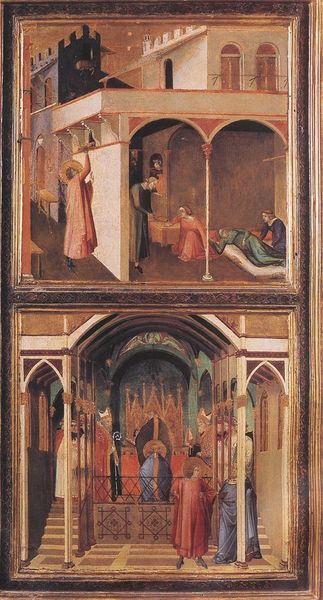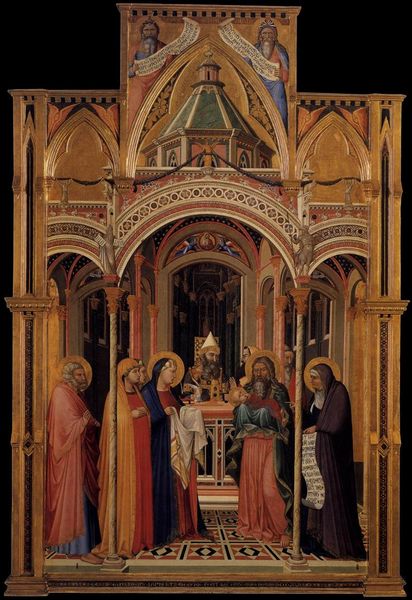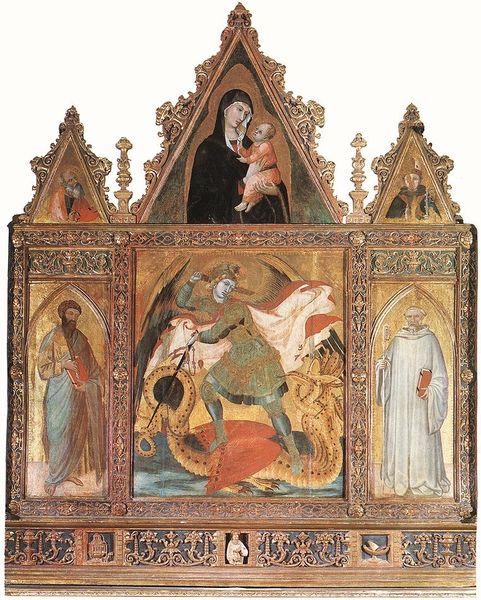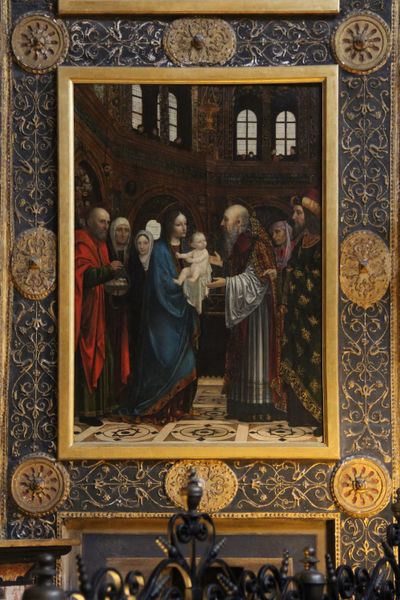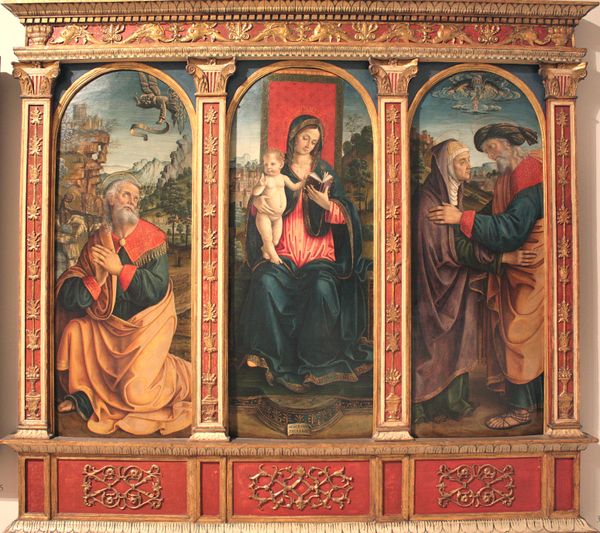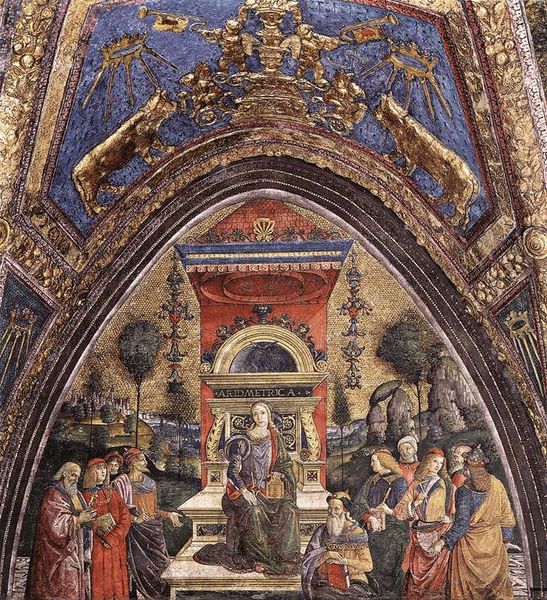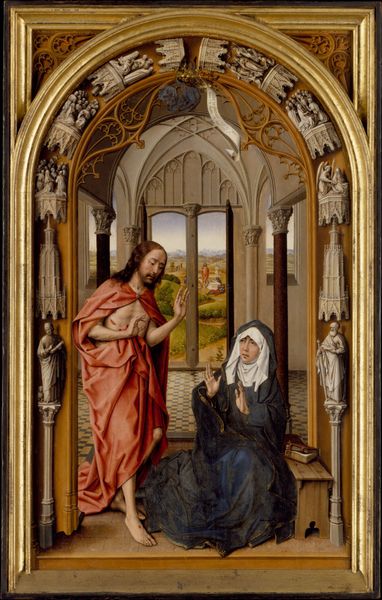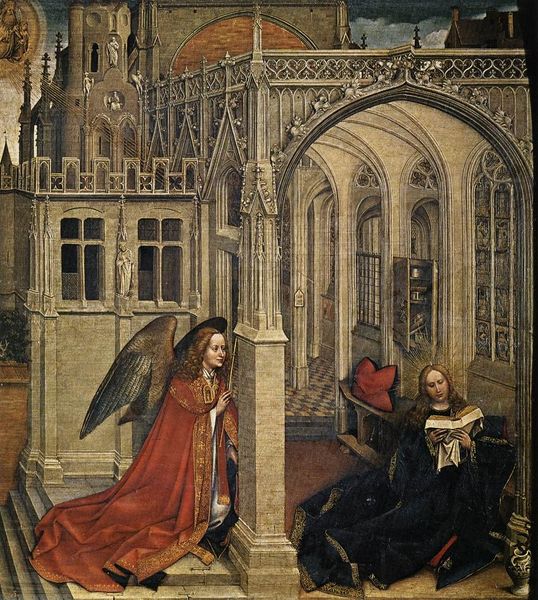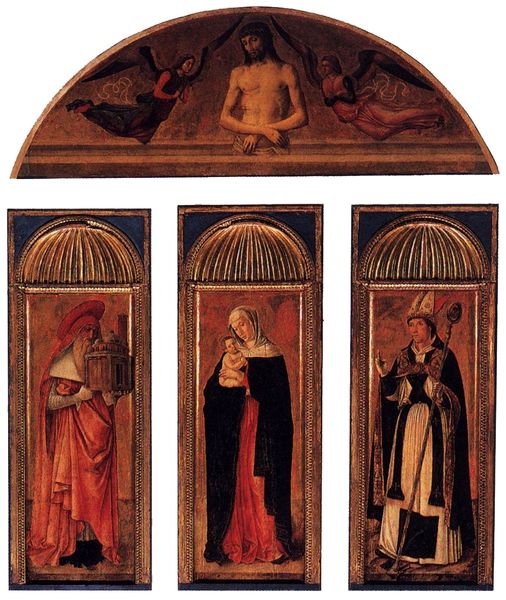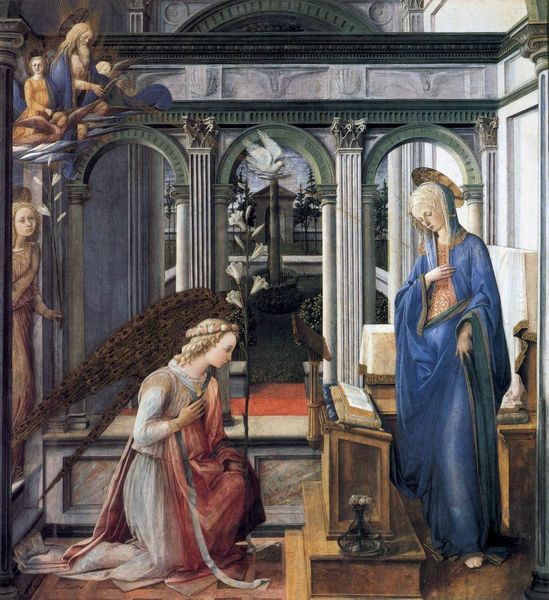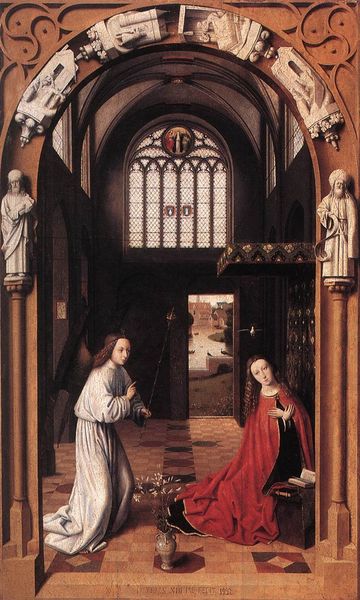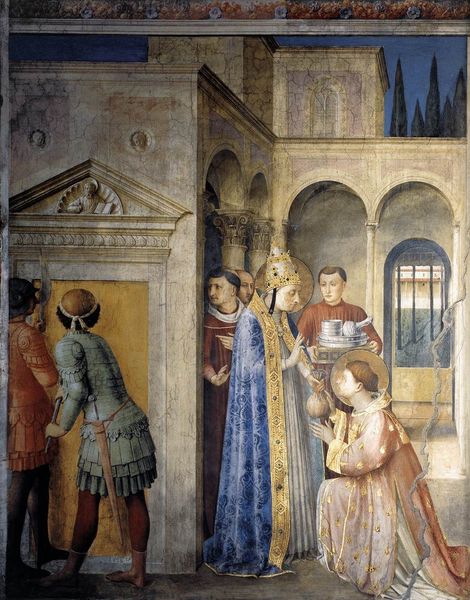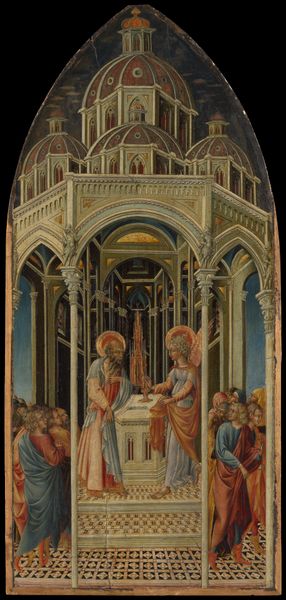
tempera, painting
#
tempera
#
painting
#
sculpture
#
holy-places
#
figuration
#
arch
#
christianity
#
genre-painting
#
italian-renaissance
#
early-renaissance
#
virgin-mary
#
angel
Copyright: Public domain
Editor: This tempera painting, “Annunciation” by Jacopo Bellini, was completed around 1444. It feels incredibly ornamental to me, especially with all the gold leaf and the elaborate architectural framing. What stands out to you as you look at this piece? Curator: Considering its original placement in Sant'Alessandro, Brescia, the elaborate gold and architectural elements speak volumes about the patrons and the social function this painting served. Early Renaissance art was often deeply embedded in systems of power and display. Think about how this image would function within a sacred space; who was it meant to impress, to inspire, and what messages was it meant to convey about the Church's authority? Editor: So the extravagance isn't just aesthetic; it's communicating power? Curator: Precisely. And consider the choice of tempera. While it allows for incredible detail and vibrancy, it also demanded skilled craftsmanship. Who commissioned this piece, and how does that affect its reception? Understanding these dynamics unlocks another layer of meaning beyond the biblical narrative itself. Editor: That’s a great point. I hadn't really thought about the materials as a signifier of status as well as skill. Curator: The very public act of displaying art was heavily loaded, politically and socially. Images such as this were crucial in shaping public perceptions of piety, power, and the established order. Think, too, of Bellini's patrons – were they local or from further afield? And how did Bellini balance artistic expression with the expectations and constraints of his patrons? Editor: Thinking about the artwork as being affected by social contexts adds more significance to it. Curator: Exactly, recognizing that interplay lets you critically engage with not just *what* we are seeing, but *why* and *for whom*. That’s the art historical power, seeing beyond just pretty imagery. Editor: I appreciate you providing that cultural and historical background; now I better understand Bellini's creative choices!
Comments
No comments
Be the first to comment and join the conversation on the ultimate creative platform.
